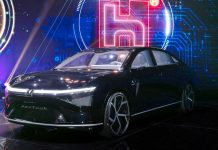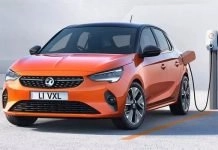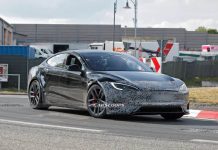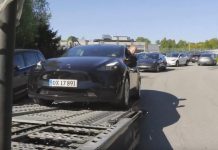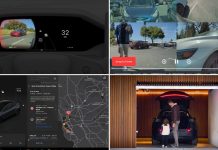British luxury brand Jaguar has announced that they will go all-electric brand by 2025, and Land Rover will follow soon after. Known as the “Reimagine” global strategy, it involves a massive electrification plan. The plan also involves two completely different vehicular platforms, which will form two separate, unique brands for Jaguar and Land Rover.
While many feel this is a bold move, there are many factors causing Jaguar to take this decision, and many others from which they can benefit. According to this strategy, Jaguar will emerge as a purely electric brand by 2025. They are also predicting 100% of the sales to be electric vehicles by 2030. With the I-Pace already launched, Jaguar has a slight lead over Land Rover, who expect a 60% sales share to come from electric vehicles. The first all-electric Land Rover will come in 2024.
Jaguar’s “Reimagine” Strategy
Jaguar’s Chief Executive Officer, Thierry Bolloré, will lead this new electrification strategy. The company announced that it will be a sustainability-rich reimagination of modern luxury, unique customer experiences, and positive societal impact. This includes an all-electric lineup for Jaguar by 2025 and the introduction of six electric cars from Land Rover. By 2030, every single model in the Jaguar Land Rover roster will have a battery-electric alternative. During the coming decade, their research team will also be working on hydrogen fuel-cell power. They plan to reorganise and rightsize the global manufacturing and assembly footprint.
Thierry Bolloré, CEO, launches new Reimagine strategy.
See us reimagine the future of modern luxury. Over the next five years, @LandRover will welcome six all-electric variants and @Jaguar will undergo a renaissance as a pure electric luxury brand.https://t.co/EcJzaiSk9Y pic.twitter.com/Lp1DdKeuBB
— Jaguar Land Rover (@JLR_News) February 15, 2021
The move seems quite ambitious for a company which has just one electric car on the market right now. However, the United Kingdom plans on banning the sale of combustion vehicles by 2030, and with the UK being the home market, Jaguar is sure to get affected. However, there are few things that Jaguar use to their advantage as well.
Jaguar can collaborate with wider sections within the Tata Group, and create synergies between clean energy, connected services, data and software development – all of which have applications in the electric vehicle industry. Moreover, Jaguar has always been a brand for premium vehicles. This can help them in the mass production of electric vehicles without any major increase in costs.
Separate Plans for Jaguar and Land Rover
As mentioned before, the group will develop two different platforms for electric vehicles, giving a unique personality for both brands. For Land Rover, they say that the driver and vehicle are united by adventure. Through constant development, the brand helps people go truly ‘Above and Beyond’. Through their three families of luxury SUVs – Range Rover, Discovery and Defender – Land Rover will introduce six new vehicles. The first of these will arrive in 2024.
Jaguar, on the other hand, will undergo a renaissance, with a new portfolio of emotionally engaging designs and next-generation technologies. They plan on scrapping the current electric replacement for the XJ, and will first focus on developing the new platform. It is, however, entirely possible that a new electric vehicle by the name of XJ gets launched.
A Future Plan Focusing On Electric Vehicle Technology
Jaguar will invest close to $3.5 billion a year into electrification and related technologies. Having paid almost $48.7 million in fines last year for missing the EU emission targets, the move has gained a lot of traction with the Labour Union in the UK. It has, however, cast a shadow over the future of the Castle Bromwich plant, which currently manufactures Jaguar XE and XF sedans and the F-Type sports car.
Electrification is the newest challenge that CEO Thierry Bolloré will have to face ever since he took the position in September last year. Having already faced issues with Brexit, emission targets and a dip in exports to China, Thierry has decided to take this challenge head-on. He was quoted as saying:
“we have the technology, we know how to do it”
With support from the Labour Union (conditional to the Bromwich Plant staying open), a new leader and heavy investments in electrification technology, Jaguar seems poised to start this new chapter, and ‘reimagine’ the process of developing electric vehicles.
What It Means For The Future
With the United Kingdom looking to go all-electric on automobile sales in 2030, the other British luxury brand, Bentley, is also doing the same. Not only that, other countries and regions like Norway (2025), California (2035) and France (2040) are also going for complete electrification. Under these circumstances, this move makes sense. Jaguar is aiming for net-zero carbon emissions by 2039.
However, this will spell doom for the current Jaguar vehicles. Cars like the F-Type, which has impressed a number of automobile enthusiasts around the world, might not find a room at the inn. But then again, Jaguar can develop an all-electric sports car, right? Thierry says:
“It’s a question that we are looking at very carefully. I’m not going to answer that right now because it’s a question of importance for us. We will answer it when we have decided exactly what we want to do with this new portfolio of Jaguar.”
When asked about the new electric vehicle platform, he says that he has given that liberty to the engineers. They will run totally free to prepare and propose the most emotionally dramatic designs, he says. He did mention, though, that this new platform is going to be more compact than the current one. This may make it difficult to develop an electric sports car.
Of course, the plan is to have a design that is “the best of the best”. Former Jaguar boss Ian Callum once said that a Jaguar should catch the corner of your eye. And that is exactly what you should expect from Jaguar. Currently, we still don’t know whether these new vehicles will capture the world as some of their combustion best-sellers did.
Our Opinion
Jaguar had made a bold move with the I-Pace, entering electric mobility through a heavily-populated segment. While the electric SUV won several awards globally, it is yet to capture the interests of consumers significantly. But a comprehensive shift in resources towards electrification might just end up being a good move for the existing design department, and maybe, Jaguar will soon become a major player in the electric vehicle industry.






